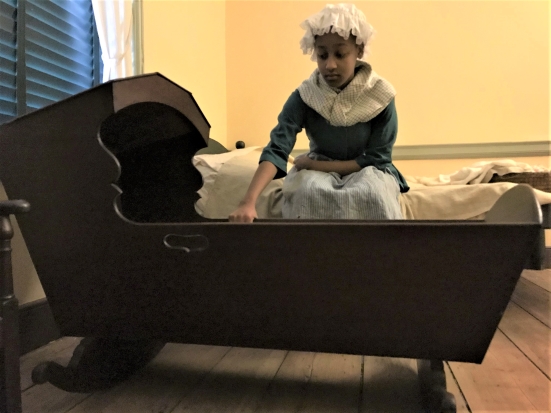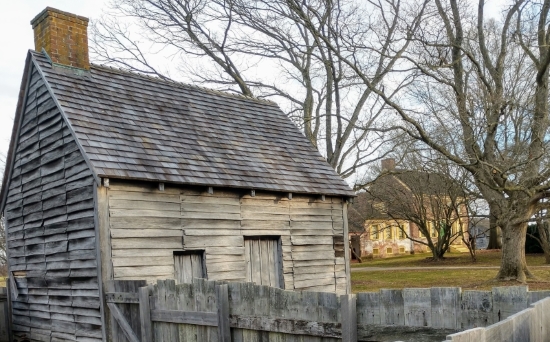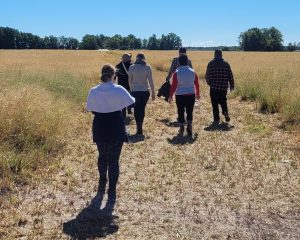Searching for lost voices of the past
Recognizing African Americans in the cultural landscape through the Plantation Stories Project
By Daniel Citron, Gloria Henry and Annie Fenimore, Delaware Division of Historical and Cultural Affairs staff
Violet Brown and 58 other enslaved people who lived in an area known as the Jones Neck, just south of the City of Dover, were freed in 1786. These men, women and children — who had been treated like property during their forced servitude — appear for a moment in one historical document.
But who was Violet Brown? Who was Violet Brown’s father, Pompey, who also was enslaved and died at the John Dickinson Plantation? What about Violet Brown’s mother, who we know survived her husband yet don’t know her name? How did they, their relatives and neighbors, both free and enslaved, help build the country we know today? Do their descendants know their stories?
Dedicated historians are now trying to learn more about Violet Brown and all these lost, local voices of American history to help answer questions like those and reconnect people with their own family histories. The Delaware Division of Historical and Cultural Affairs’ Plantation Stories Project is currently presented to the public as a searchable online database, containing the names of free and enslaved Black people associated with the John Dickinson Plantation.

The Project’s mission is to find and share the stories of the potentially hundreds of people who lived, labored and died at the site, particularly those who were oppressed and marginalized. It builds on the decades of research completed at the John Dickinson Plantation. A new user-friendly digital platform for the project is expected to come in 2022.
While the Division’s project team takes an organized approach to researching and cross-referencing documents, it is important to recognize that not all gaps can be filled in. There’s one unfixable flaw: the documents informing this project primarily come from white colonizer enslavers’ perspectives, which will never be objective nor complete. Some information may never be found.
The Division aims to present an inclusive and accurate view of Delaware’s history, and the Plantation Stories Project is a part of that effort. The Delaware Department of State recently recognized the important work of this project by naming Gloria Henry, Annie Fenimore, Vertie Lee and Sakinaa Rock “Employees of the Third Quarter of 2021.”

John Dickinson was a white colonizer enslaver and one of this nation’s founding fathers, who wrote of freedom and liberty for all while holding human beings in bondage. He finally freed the people he had forced to labor for his prosperity in 1786, with an unconditional manumission. That document is one of the five primary sources the research team used as a starting place for the project.
“This is difficult research, but this is just the beginning,” said Dan Citron, the Division’s historic sites team manager. “The work that’s being done at the John Dickinson Plantation is not only important for that site and the people who lived there, but to give a better understanding to everyone that this is what was happening across the state, colony and country. It’s really important to understand how our country was formed. And in many cases, it was at the expense of those who were enslaved, those who really helped create this country, and that’s really never been recognized properly.”
These unjustly forgotten stories could potentially include hundreds of other enslaved and free Black people. The team is striving to connect these lost legacies to the modern-day by searching for and engaging descendant communities.

Henry, who has been with the Division for more than 30 years, made an appeal for the community’s help in making those connections during a recent panel discussion about the African Burial Ground hosted by Governor John Carney.
“We are asking our Delaware community and other communities to engage with us, to share information with us, to help us make future decisions,” Henry said. “Our work is not done. We want and need the community’s involvement. We cannot make these complex and emotional decisions alone.”
The Plantation Stories Project will continue as part of the Division’s “Ending Erasure: Recognizing African Americans in the Cultural Landscape” initiative. The work done so far has shed light on information that will clarify and share the stories of these early Delawareans for current and future generations.
To learn more about people who lived and labored at the plantation, please visit the John Dickinson Plantation. To view the Plantation Stories Project or share your personal stories or information with state historians: call 302-739-3277, visit us online or email JDPmuseum@delaware.gov.


